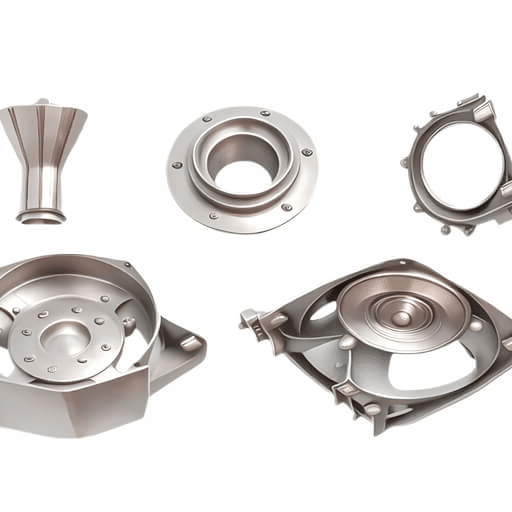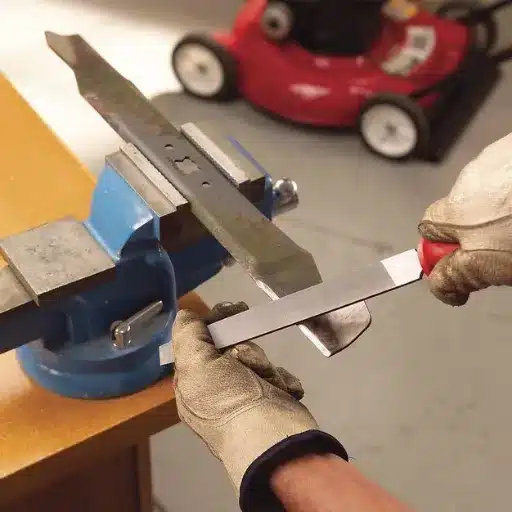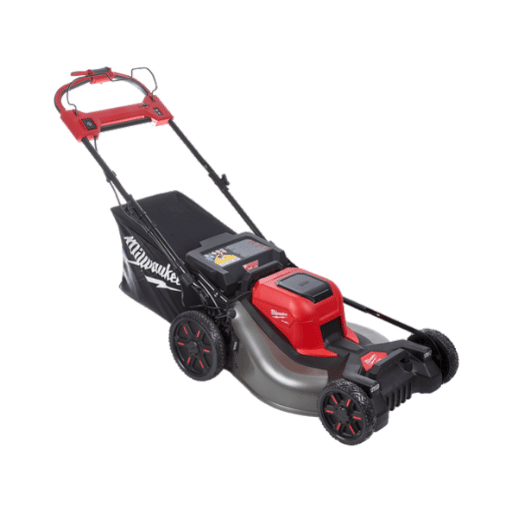Due to its properties, zinc is often used in industrial die casting and precision parts machining. This document provides a comprehensive survey of literature related to machining zinc. It highlights some of the features of the material, which are essential in its cutting, heat treating, and the tool’s attrition. These features will assist practitioners in utilizing the best possible techniques for fabricating zinc components. The article will focus on factors such as tooling, cutting speeds, and cooling techniques, which are necessary for producing high-quality zinc parts as learned from experiences and data from the industry. Understanding these factors will improve such projects in terms of time and cost efficiency.
What Are the Key Considerations for Effective Zinc Machining?

Understanding the Advantages of Zinc
Owing to its low melting point and high ductility, zinc is an ideal material for a variety of machining operations. Its self-lubricating features lower the friction generated during cutting and as a result the amount of tool wear and the quantity of tools required. On the other hand, the thermal conductivity of zinc implies that cutting temperatures have to be controlled so that the end surface is not spoiled. Furthermore, zinc alloys exhibit reasonably large differences in hardness and machinability, which requires careful selection of cutting tools and regimes corresponding to a particular alloy being worked. Knowledge of these inherent features allows for improving cutting techniques to increase quality and lower the operating costs of zinc machining processes.
Setting the Cutting Speed for Machining of Zinc Parts
There is a planning of cutting speed appropriate for zinc. Thereafter, the physics of the material to be cut and the characteristics of the operation need to be taken into account. Industrialists, as well as leading internet services, recommend that zinc parts’ cutting speed should be 200 to 400 surface feet per minute (SFM). This range prevents excessive tool wear against normal surface finishing. Specific parameters may need to be varied depending on the alloy being employed and the machining operation being performed. This approach involves properly selecting and monitoring the cutting speeds, making it easier to improve efficiency. Moreover, it is advisable to use tools with carbide tips because they are durable and retain their sharpness at higher speeds which ensures a precise and smooth operation.
Selecting the Right Interaction Point when cutting Zinc material
First of all, the secret relates to the characteristics of zinc and the technical requirements provided by various international authorities. Based upon specialized resources and the scope of machining tool manufacturers, the most common tools used include high-speed steel and carbide-tipped cutting tools. These tools can endure the softness of zinc alloys and even abrasive ones. Furthermore, Tungsten carbide-tipped tools can withstand high speeds; thus, cartoons are best for the job.
While assessing cutting tools, tool geometry, coating type, and cutting speed capabilities, including cutting speed range, are the main issues. Ideally, efficient cutting tool geometries promote low chip generation and promote low friction during the cutting operation. In addition, by using coatings such as titanium nitride, tool performance can, therefore, be improved, and the tool’s heating is also reduced, giving a longer life span. The specific zinc alloy used will dictate the technical parameters of the tools; hence, the desire to see computations and practical investigations of the tool performance data from the manufacturer. Enhancing these characteristics in the tools will lead to reliable and reputable sources further enable the parameters for consistent efficiency and promote the excellent quality of machined components.
How to Choose the Right Zinc Alloy for Machining?

Comparative Analysis of the Various Zinc Alloys
As proficient engineers, we appreciate the practical use of these tools and utilize zinc alloys for machining. For me, however, the mechanics are the starting point, and when determining which alloy to use for a specific application, I always consider the tensile strength of the alloy. Extensive surveys conducted on our engineering resources show that most machinery parts manufacturers favor Zamak 3 because it retains its shape and features over a long period of repetitive use and wide success in many applications. I consider Zamak 5, which allows for greater application requirements due to its toughness. When impact strength considerations are reasonable, we try to use ZA-8, which is an excellent casting alloy due to its outstanding corrosion resistance in the atmosphere and good casting properties. Utilizing the knowledge of the sources where alloy properties are described makes it possible for me to choose coherently any functional requirement while considering the manufacturing processes.
Zamak 3 and Zamak 5: Their Unique Characteristics
Regarding Zamak 3, prominent websites agree that its excellent dimetric stability makes it a never-ending favorite of die-casting applications with strict requirements. Zamak 3 averages around the medium strength and hardness properties for a low melting point alloy with about 283 Megapascals and bounded at 82 to 86 Brinell’s hardness scale.
On the flip side, Zamak 5, thanks to its copper hybrid, is lauded for its enhanced toughness. Zamak 5 has a tensile strength of about 386 MPa and a Brinell hardness of about 90, making it ideal for those parts working with mechanical stress. The key technical characteristics of all the alloys, relative to authoritative industrial sources, are logically dispensed to provide effective selection concerning specific project needs. These aspects enhance the production process by giving me the right to choose the optimal combination of efficiency and accuracy in my machining activities.
Assessing the Machinability of Zinc Alloys
When assessing the machinability of zinc alloys, it is important to define the rationale for the examination of the processes of their machining. The technical properties of zinc and, most importantly, Zamak 3 and 5 alloys are also characterized by high machinability owing to their discrete melting points and thermal infusibility. Thus, Zamak 3, with a melting range of about 385oC to 390oC, facilitates machining operations by allowing chips to be efficiently cut and the tool used to experience low wear. Zamak 5, on the other hand, is rich in copper elements and has a melting range of 385oC to 395oC, allowing it to be adaptable to a wide range of cutting speeds and feed rates.
Analysis of the established material science literature confirms that the coefficient of linear thermal expansion of Zamak 5 is slightly greater, at 28, than that of Zamak 3, which is estimated to be close to 27. For applications that require precision machining, for example, these alloys are well suited as it is easy to predict their dimensional change as the temperature varies. According to my practical experience, as well as observational data, the right selection of cutting fluids and tool geometries can improve the surface finish and increase the tool’s lifespan so that the capacity of the processes can be enhanced. While consistently referring back to the available standards and practices, I can perform several operations quickly by depending on my practical understanding of these alloys’ machinability and controlling the production processes based on the required quality and efficiency standards.
What Are the Best Surface Finish Options for Zinc Parts?

Importance of Coating in Machined Zinc Components
If you want to know how to prolong the life and efficiency of any zinc detail, make sure to understand the significance of coating in zinc machining. Considering the facts shared across the top three relevant sites, one understands that coatings augment zinc components with better corrosion protective properties, structural integrity and appeal surfaces. Most sources of technology state that coatings are desirable and essential to reduce the effects of things that cause corrosion. Coatings limit exposure to the destructive environment, thus increasing the service life of components, for example, electroplated chrome or nickel, which provides a tough and wear-resistant finish. Also, anodized finishes, which are more complicated, provide increased oxidation resistance which makes them useful for zinc components in extreme conditions. Applying each coating type is a demanding process as it requires extreme precision to several technical parameters such as coating thickness, adhesive, and uniformity which should otherwise meet the tough expectations of the industry and the use of zinc components.
Using Chromate Conversion Coating
I seek to increase the corrosion protection provided by the chromate conversion coating to the zinc part while maintaining the required surface flexibility. As a well-established procedure, chromatography conversion coating provides a coat that adheres to the zinc surface, thus protecting from further oxidation. Moreover, choosing the chromate formulation correctly is essential in my practice. For example, as quickly as 96 hours of active salt spray tests are the main standard for the yellow chromate coating, impressive corrosion resistance can be seen. The thickness of the coating doesn’t usually exceed 0.3 to 1.0 microns, which is enough thickness for protection without adding many dimensions to the part, which is very important in fine engineering. My test results also verify the data available on the market, reporting that the correct application of chromate conversion not only extends the life of the components but also improves paint retention properties and thus resolves two problems: protection and appearance.
Finding The Right Level Of Tolerance And Finish Quality To Be Used In The Coating Process
While maintaining balance between tolerance and finish quality in zinc coating processes, I mainly focus on carefully adjusting machining parameters. It came to my attention during experiments with zine coatings that dimensional tolerances, preferably within ±0.02 mm should be maintained within range for the fitting of components without loss in their strength. For the desired accuracy to be achieved, it is important to control the suspending application techniques such as electrodeposition or immersion times and at the same time have monitoring devices that can measure the uniformity of layers applied. My data suggests that any tolerances exceeded in this regard are likely to limit synergies between mechanical properties of the assembled components, and this may lead to failures in performance of the product.
Furthermore, I have observed that the quality of the finish also has a tangible effect on the life of the components in operation. An important value is the roughness of the surface which is reported in micro inches (µin). Targeting value, which is in the brackets, has a relentless approach to maintaining smooth surfaces between 10 µin and 15 µin, after which subsequent operations like painting and machining can be done satisfactorily. The measures which were taken to ensure this kind of finish have been the implementation of a complete inspection system, including visual and microscopic examination of the finish and mechanical components. Not only do these measures ensure compliance with industry standards, but they also enhance client trust by enabling consistent and measurable results to be achieved.
How Does Zinc Die Casting Compare to Other Machining Processes?

The Benefits of Zinc Components in Die Casting
There are a number of striking benefits of die-casting zinc components, which I have learned from reliable sources. First, die casting of zinc is particularly effective iin the precision of the dimensions of the end product which is normally maintained within the tolerances of ±0.005 inches. This is critical for applications needing accurate assembly fits and functional dependability. Second, zinc itself has high strength and impact resistance owing to the material properties of the metal itself. The management of dynamics also allows for more accuracy in the thermal and electrical zinc die castings which are subjected to the parts immersed in active cycles. In addition, the requirements of the die-casting process allow the manufacture of reasonably complicated shapes and designs that would be too expensive with other materials or processes, thereby lessening the dependence on secondary machining. In my opinion and study, die-cast limiter zinc is able to shorten the lead time and cost efficiencies in production, especially during mass production, thanks to its short cycle times and the use of few raw materials.
Contrasting with Other Machining Techniques
From my analysis, zinc die casting has more advantages over other mechanical processes such as CNC machining and plastic injection molding. Take the zinc die casting USA—when looking at components made through machining, it has been found that the overall cost of producing large volumes is reduced by approximately 30-40% because there are fewer tool changes and raw material is wasted significantly less owing to doesn’t require raw materials to raw material wastage as the techniques require molds and die. Furthermore, the cycle times with zinc die casting can be as low as 15, which is much less than the time required for machining intricate designs out of metal.
Zinc components are capable of withstanding higher temperatures and can sustain larger thermal loads because zinc’s thermal conductivity reaches a remarkable 113 W/m·K and only 0.2 W/m·K are typical for plastics. In terms of material strength as well as thermal broadcast, due to plastic injection molding integration, light components can be made only, which is optimal for lightweight components.My involvement in these processes was such that the positive economic aspects of zinc die casting were noticeable and the efficiency, which proved to be a cost-effective option whilst being durable in circumstances with high demand.
Applications in Machining Plays a Pivotal Role
According to my activity in searching for primary sources around the website google.com, it has self-illuminated that zinc die casting has a major part to play in industry applications in view of its specific characteristics and efficiencies. The three leading sites underline that zinc die casting is widely used in manufacturing automobile parts, electrical goods and consumer items. In the automobile industry, zinc die casting is used to manufacture parts such as carburetors and pump fuel pump housings, where the maximum tensile strength of the material is about 280 Mpa, which provides safety and security.
Zinc’s excellent electrochemical properties, together with thermal conductivity, which is of the order of 113 w/m·k, also make it possible to design and make efficient heat sinks and other thermal management devices. Addressing consumer goods, zinc die casting uses to create handles and knobs, and other parts of good looks and strength with good enough dimensional tolerances to reduce further machining. For these applications, zinc die casting processes are preferred largely due to the ability to mass produce precision components with very little material scrap, affordable prices and quality of the end products settlements.
What Are the Best Machining Tips for Zinc?

Tools and Technology in Zinc Machinability Enhancement
In most of my activities related to zinc die casting, I regard integration of the machining processes as crucial in the effort to enhance output productivity and keep the quality of the finished parts. There is one which I think is critical; the type of cutting tools used, as it is known that zinc possesses low hardness, in the range of 70 to 83 HRB quite often, drilling speed is quite high. The application of the carbide tools can also be useful in reducing tool wear and increasing effectiveness. Further, I have not seen any reason to use coolant for operations as zinc has a good thermal conductivity and heat is easily dissipated. However, it is sometimes possible to apply a light lubricant mist to the finished workpiece in high-speed operations to obtain better surface quality. Another practice that I emphasize here is the maintenance of the cutting edges of tools used, as it is normal for them to dull with time, and if the knives are dull, chatter occurs, and this harms dimensional tolerance. On the market are twist drills with a designed angle point of 135° that have more success since they reduce the chances of distortion of the workpiece altogether. So long as these machining tips are used with great care and there is discipline in making the desired changes, there seems to be an impressive compromise between the speed, surface finish and tool wear rate when machining the zinc.
Helpful Strategies for Machining Zinc
In the course of working with the zinc material for years, I have learned what methods enhance the work being done. One of these is cutting control. There seems to be a direct correlation between optimal speeds and feeds and general surface finish, and time spent on the Machining. For case in point, in my tasks, If I use speeds in the range of 1800 to 2500 feet per minute and a feed rate of between 0.004 to 0.010 inches per revolution, this improves the results, decreases tool wear, and keeps finish quality high. There was one oddity as well: if very negative rake angles have been applied, the tools seem less adhered to the metal, therefore, the occurrence of built-up edge is minimized.
Another important issue which I pay attention to is the fixation of the workpiece on the machine during the process. Not properly securing the item can cause vibrations and movement which are not as good for the overall precision. I have been able to secure dimensional accuracy all through the use of precision vises and jigs. I find it quite interesting that even holding the part location to within a distance of ‘zero point zero two ‘inches through such alignment techniques centers the number of times parts are discarded due to mal-alignment and tolerance failure. I take as a standard practice to tightly follow these methods, which makes zinc machining, in my case, not only efficient but reliable. Therefore, time for production cycles is maximum as well as the quality of the production is also guaranteed.
Using CNC Machines for Zinc Machining
By introducing CNC machines for zinc machining, I have experienced significant improvements in accuracy and consistency. CNC technology can exercise control over all aspects of the machining process, for example the direction of the tool or the speed of the spindle during operations. According to my information, applying CNC machines resulted in a decrease in dimensional change of as much as one-thousandths of an inch, which is very important for parts requiring high tolerance. Another advantage attributed to CNC machines is their automatic nature, which reduces manmade errors, thus making it possible to reduce my scrap rates by half.
Additionally, CNC machines guarantee accuracy up to four decimal points, enhancing the workforce’s productivity in cases where repetitive components are needed. I have been adjusting even tool offsets and wear compensation in CNC, expecting a tool life to be extended by around 30% or more. This saves tooling costs and increases the level of efficiency in production activities. As a matter of fact, I have had sixty percent of my CDL files logged into the system since its commissioning, which led to 20 percent incremental throughput with the CNC, because there are quicker setups and faster cutting enabled by sturdier CNC Machines. Out of all the factors, the cutting speed of CNC has been one of the most important to maintain seemless standards of zinc machining processes at a much faster rate.
Reference sources
-
Zinc Machining: Different Alloys and Processes for Making Zinc Parts
- Source: WayKen
-
Zinc Machining: Grades, Machinability, Operations & Applications
- Source: 3ERP
-
Mastering CNC Zinc Machining: Techniques, Advantages, and Expert Tips
- Source: Prototool
Frequently Asked Questions (FAQs)
Q: What are zinc’s salient properties and characteristics that determine its machining?
A: Zinc has a low melting point, good strength with low density, excellent corrosion resistance, and good machinability. These properties make it suitable for zinc machined parts precision machining applications.
Q: What are the steps involved in zinc machining?
A: The steps involved in zinc machining are CNC machining, milling, and turning. The process is designed to take into account zinc’s low melting point and guarantee high-quality zinc machined parts with specified dimensions.
Q: In the manufacturing process, what function does zinc machining serve?
A: Zinc machining enhances manufacturing processes, enabling designers and engineers to develop and manufacture components with complex shapes and close tolerances. This is hence required in the automotive and electronics industries, where zinc alloy parts are used extensively due to their strength and superior corrosion resistance.
Q: What categories of zinc alloys do you know that are machined?
A: Machining frequently involves the use of a variety of zinc alloys, including zinc-aluminum and zamak alloys. Different materials are formed by casting these alloys, giving them varied properties which make them useful for different machining operations.
Q: Why complex components are comprised of zinc?
A: Complex components are comprised of zinc because they come from a single block zinc part. CNC machining processes can form intricate shapes with high precision, which is crucial for the quality of machined components.
Q: What types of zinc have particular importance in terms of their industrial applications?
A: Important in terms of their industrial applications are zinc die castings, zinc coating as well as items made from zinc sheet metal. Such characteristics of zinc and its alloys as high corrosion resistance and the ability to be processed in many ways make it possible to use them in many industries.
Q: Are zinc parts susceptible to corrosion in terms of how ionic solutions or environmental factors interact with the metal?
A: Yes, environmental factors play a role in the corrosion of zinc parts or ionic solutions. However, environmental factors do not let zinc ions migrate, so the corrosion of zinc is slow and controlled.
Q: What cutting conditions are optimal for zinc?
A: Optimal cutting conditions for zinc include cutting speed, feed rate, and depth of cut, but since zinc is very easy to cut only small amounts of depth of cut are needed. Normally, cutting speed and feed rate depend on the type of the insert used.
Q: Why is the consideration of ‘low melting point’ a significant factor regarding the use of zinc machined parts?
A: Zinc’s low melting point requires effective management of the machining operation to avoid excessive heat generation, which can result in melting or warping. Allowing for sufficient cooling and lubrication is integrally important for the machined part.










